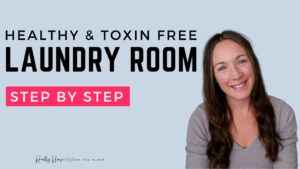If you walk down the home and garden aisles at the hardware store, you know that there are more landscaping ideas than you’d ever know what to do with. When it comes to a healthy house, inside and out, there are some choices that rank higher when it comes to landscaping.
GRADING
Landscaping rocks are a great choice for keeping positive grading around the house. Plus, rocks aren’t something that need to be maintained every single year. You can also use a well draining soil around the home to improve the grading.
Make sure you don’t have gardens and woodchips, mulch or any other material that holds moisture next to the home’s foundation. This will cause extra moisture near the home as well.
FERTILIZERS & LAWN TREATMENTS
But what’s worse is that the chemicals don’t allow your your lawn to be a safe and healthy space for play and entertaining. The chemicals turn the space into an unhealthy and unsafe environment. Plus, our shoes and feet pick up the chemicals and track them into the house. Once inside these chemicals end up everywhere, including our house dust.
But there are some great alternatives to chemical treatments. There are even companies that specialize in organic lawn treatments. If you get my weekly tips and newsletters, you saw that a few weeks ago I included a list of the top organic lawn treatments you can apply yourself.
TREES
|
If you have trees surrounding your house your have a major benefit to the outdoor spaces right off the bat. Trees are an amazing tool when it comes to landscaping. And although they can be pricey to add to your yard, you can sometimes hunt for a good deal at a nursery or even check out some reputable through classifieds on craigslist or facebook marketplace.
Trees are incredible for so many reasons, but first and foremost, they actually absorb VOCs from the air. While outside this may not be a huge concern, every little bit helps and if you have your windows open a lot, it means you’re getting fresher air than if you you had no trees. Trees also help absorb moisture in your yard. Depending on where you live, you may find that trying to keep the lawn dried out is a challenge. Trees, especially newer trees with growing and developing roots, can really use a lot of the moisture in your yard. Depending on what kind of tree you choose and what kind of climate you live in, you can place trees strategically around your home to help prevent energy loss. Trees that are tall enough can block direct sunlight from your home and keep it cool in the summer. If it’s a deciduous tree, it can still allow the sunlight to heat up your home in the winter. Many people forget this, but it truly can save you a decent amount of money in cooling costs if you plan out where your tree goes. Trees are also a great way to add privacy and block noise pollution from your yard and home. |
RAIN BARREL
The ideal placement is underneath a gutter so you can collect more rain and water. An added bonus to having a rain barrel is that you’ll be keeping water away from your foundation and rerouting it to areas of your lawn that may need a drink of water more frequently, such as a vegetable garden.
GARDENS
A few things to remember when it comes to planting gardens of any kind around the house is to avoid direct contact with the house or foundation. Keep garden areas a distance away as they hold a lot of moisture and can accelerate negative grading around the house.
You’ll also want to keep your lawn and garden regime as organic as possible. Try not to use chemical pesticides or fertilizers as gardens usually have elements we ingest or bring in our home. You can find more information on organic gardening here.
OUTDOOR LIVING SPACE
Getting outdoors as much as you can is important so that the body can have a break from the toxins it encounters indoors. Toxins have a tendency to build up within the body the more we come into contact with them. When the body can have a break from these indoor toxins and get outside, it is given a chance to heal and recuperate from these toxins.
There are many ways you can incorporate an outdoor living space into your landscaping design.
An outdoor dining area is a nice touch and allows you to be outside if you’re entertaining as well. Another option is an outdoor living room with comfortable chairs and seating. You could also create a space for an outdoor fire pit if you’re in an area that allows this.
Make sure to make this space comfortable and attractive so you’ll be more likely to spend time here. Lights and flowers can help create a beautiful space.










